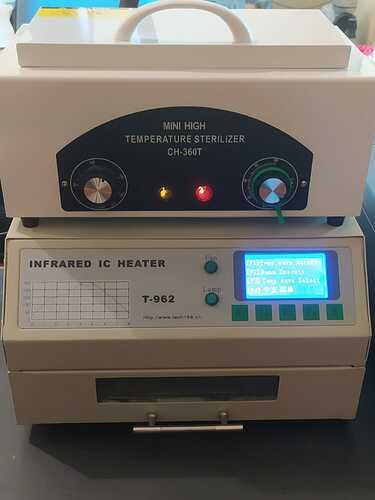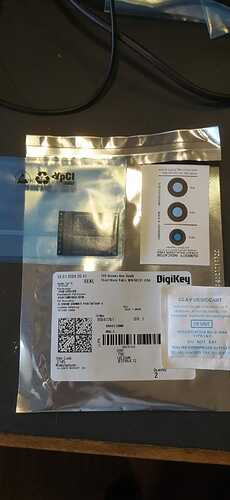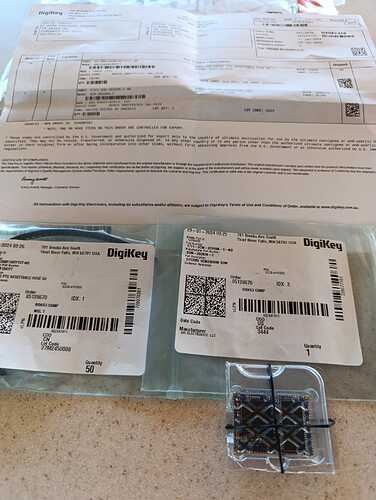On to Recovery…
Of the three boards where the chip popped off, after re-positioning and re-baking two of them are working as expected, the other not so much…
Of course I don’t know for sure if the problem is due to the chip problem or something unrelated, as I have another board from a previous batch with identical symptoms. But maybe that popped off just a little bit too?
Anyway, the boards come up with the Loader, and TinyCLR Config will recognize them.
When I ask it to install new firmware, it goes through the Erase, then the Download, then asks to reconnect, but the reconnect fails. I can do this over the physical COM port or the USB GHI virtual COM port, no difference.
Does this indicate the flash was erased and the firmware was successfully downloaded, or isn’t that checked at that stage?
If I ask it to install an App, it does the erase, install firmware, install App, and hangs. Sometimes a big Windows diagnostic dialog comes up saying something about a problem with a COM port.
If I connect via Tera Term the (undocumented?) “T” command prints:
CECC82BA
E97EE07E
CEE07A3C
EE32178D
A91DA61A
6B551FA2
D986582C
75291769
F24C4C5A
C69C6D40
A28DF6AD
DAE12F6F
C9AA145E
24F22BB3
F24C4C5A
C69C6D40
A28DF6AD
DAE12F6F
3F494013
57D0E972
A63DBEDA
5832B62D
A91DA61A
6B551FA2
DC8EA91C
B3A7DC36
41B630E9
45E5F230
6B6FB7F0
AE659BD3
C9AA145E
24F22BB3
41B630E9
45E5F230
6B6FB7F0
AE659BD3
Is it a list of block checksums or similar that could be useful for diagnostics?
I’ve ordered some of the WinBond chips on the assumption that that is the problem, a drying oven for the rest of my stock, and I’ll hold off ordering more modules as long as possible to try and get the new packaging!



